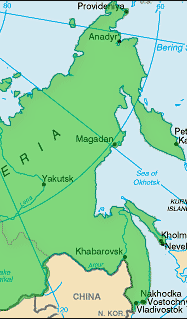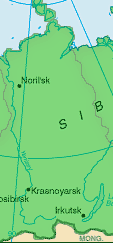- Visit Our Blog about Russia to know more about Russian sights, history
- Check out our Russian cities and regions guides
- Follow us on Twitter and Facebook to better understand Russia
- Info about getting Russian visa, the main airports, how to rent an apartment
- Our Expert answers your questions about Russia, some tips about sending flowers

Federal Districts: North West | Central | Volga | South | North Caucasus | Ural | Siberia | Far East
Map of Russia
General info about the federal structure of Russia
The constituent part of the state in Russia is called the subject of the Russian Federation or, in abbreviated form, the subject of the Federation. According to the Constitution adopted in 1993, the Russian Federation consists of equal subjects. There is no right to withdraw from the federation.
Today’s Russia inherited its territory from the Russian Soviet Federative Socialist Republic. In 1992, a Federal Treaty on the Delimitation of Powers was signed between the federal center and the regions. In 1993, when the current Constitution of Russia was adopted, there were 89 subjects.
As a result of the unification of regions in 2003-2008, their number decreased to 83. In March 18, 2014, as a result of the annexation of Crimea to Russia, the number of subjects increased to 85 (the Republic of Crimea and Sevastopol, the city of federal importance). Although Russia’s proclaimed sovereignty over Crimea has not received international recognition.
There are different types of subjects:
- 46 oblasts,
- 22 republics (unlike other subjects, the republics are characterized in the Constitution of Russia as states, but, at the same time, it does not mean that they have state sovereignty),
- 9 krais (there is no legal distinction between “oblast” and “krai”),
- 4 autonomous okrugs,
- 1 autonomous oblast,
- 3 cities of federal importance.
The federal districts of the Russian Federation were created in 2000 with the following justification: “In order to ensure the implementation by the President of the Russian Federation of his constitutional powers, to increase the efficiency of the activities of federal bodies of state power and to improve the system of control over the execution of their decisions.”
Today, there are 8 federal districts in Russia: Central, Northwestern, Southern, North Caucasian, Volga, Ural, Siberian, Far Eastern.
The cities, towns, and regions of Russia in alphabetical order.










